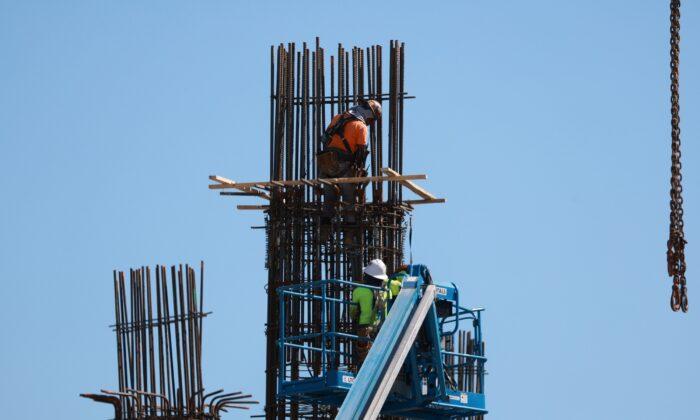U.S. job openings unexpectedly rose last month, but the strong labor market numbers could lead the Federal Reserve to raise interest rates again in June.
Fed Chairman Jerome Powell has repeatedly stated that the elevated openings-to-unemployed ratio was an indication of how tight the job market was and that the ratio could be reduced without the unemployment rate rising significantly.
Unless the central bank can return levels to the pre-pandemic ratio of 1.2, which critics see as unrealistic, Fed policymakers worry that the tight labor market will put upward pressure on inflation.
The quits rate, the number of people quitting their jobs and a measure of labor market confidence, fell to 2.4 percent last month from 2.5 percent in March.
This was in line with a Conference Board report from May 30 that showed confidence in May falling to its lowest level since April 2021.
The number of new hires rose, suggesting employers were increasingly taking in new applicants and those unemployed rather than poaching employees from other companies.
More Jobs Open up in April
The U.S. Bureau of Labor Statistics JOLTS report on May 31 showed that the number of job openings on the last day of April rose to a seasonally adjusted 10.1 million from 9.75 million in the previous month, bringing them to their highest level since January.Despite the jump in April, job openings have been gradually falling, while employers are appearing to have an easier time retaining and finding workers.
The historically low unemployment rate brought the number of job openings per unemployed person to 1.8, up from 1.7 in March, one of the highest readings since 1953.
However, ratio levels were not as skewed compared to the two job openings for each unemployed person in March of last year.
Still, this is well above the 1.0-1.2 range that is required for a jobs market to not generate too much inflation.
Strong Labor Market May Cause Fed to Hike Interest Rates
The low jobless numbers have worried some investors who hoped that the Fed’s rate policy-setting committee would halt and pause an increase in interest rates at their next meeting in June.
“This is not what the Fed was hoping to see,” Priscilla Thiagamoorthy, a senior economist at BMO Capital Markets in Toronto, told Reuters.Meanwhile, some economists are skeptical that the JOLTS report is offering an honest reading of the labor market.
Economists like Goldman Sachs’ Ronnie Walker wrote that the low response rate to the survey had reduced the sample size and could be boosting the JOLTS data.
He noted that alternative measures of job openings from LinkUp and ZipRecruiter had declined sharply in the past year. He acknowledged that those could be downwardly biased, as their samples could be skewed toward companies that were more likely to have an online presence and higher job cuts.
“As a result, we suspect that the ’true' level of job openings lies somewhere in the middle of the range implied by JOLTS and alternative measures of job openings,” Walker said, as workers grow less confident despite the demand for more labor, leading to fewer resignations.
For now, the U.S. labor market remains strong, with few signs of any major changes over the next few months, as analysts are more concerned regarding the next moves by the Fed.
Reuters contributed to this report.





